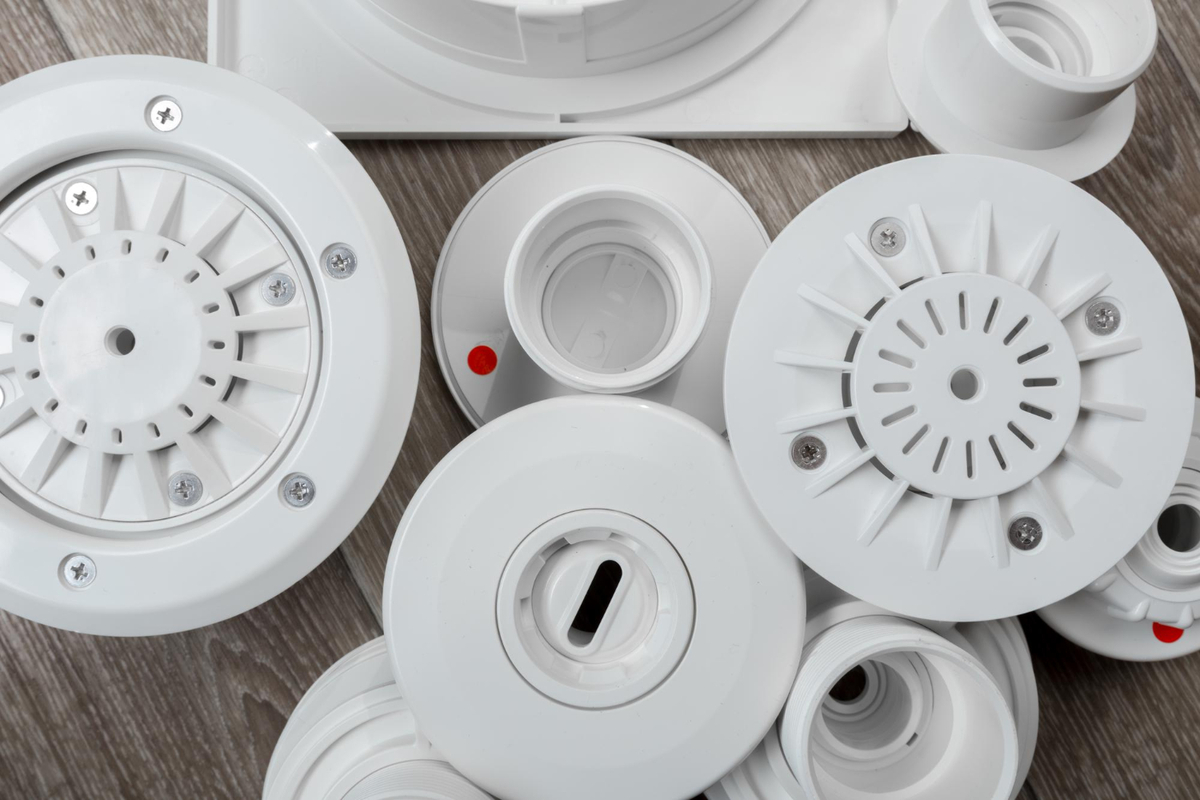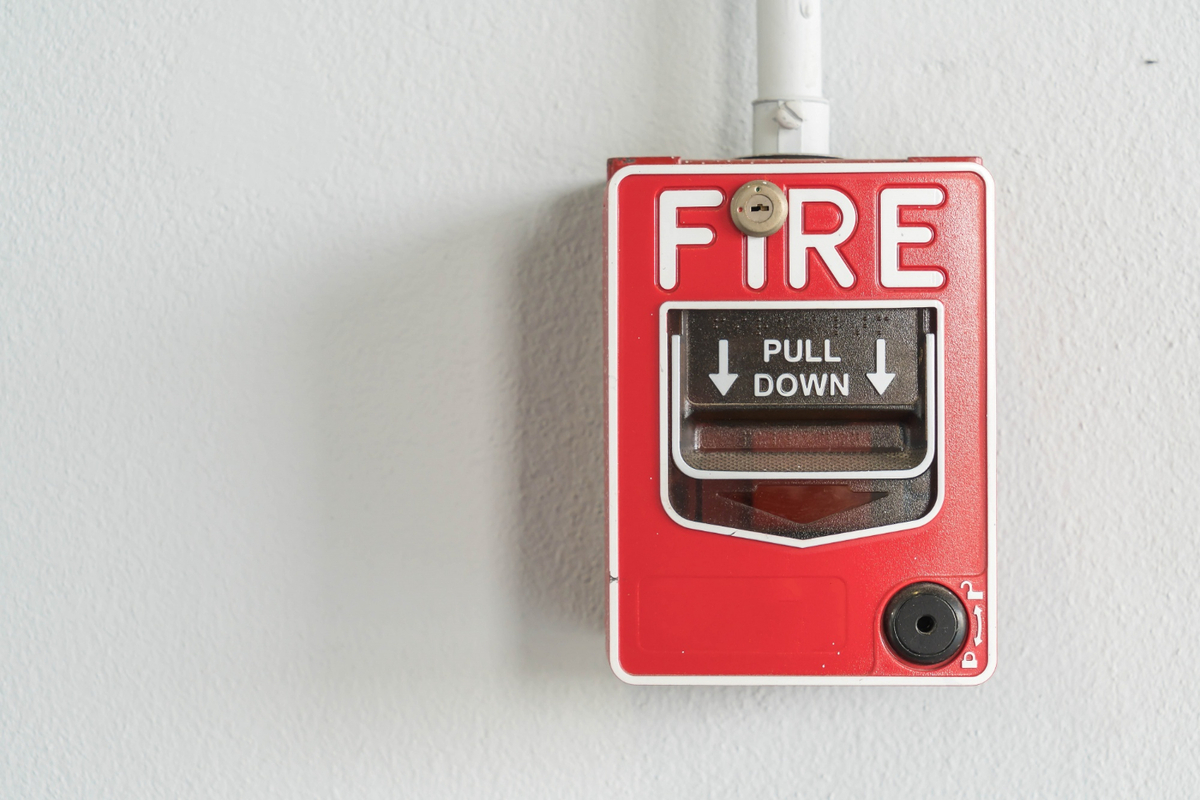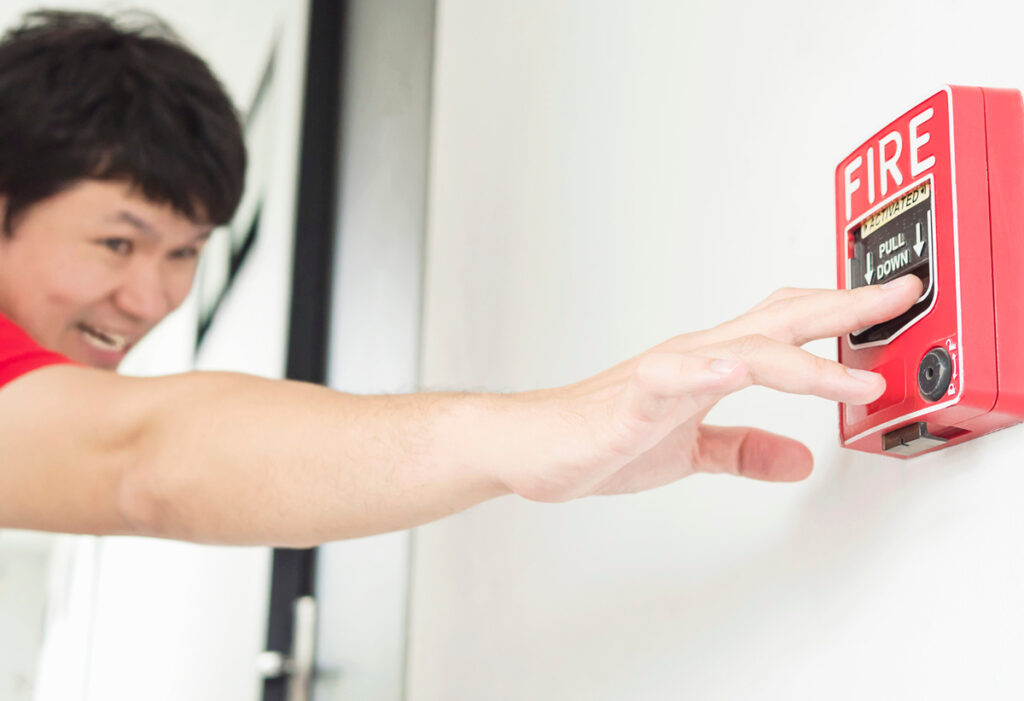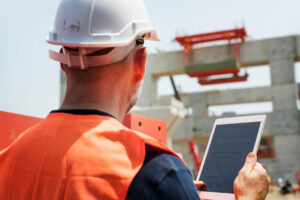Modern Fire Detection Systems are essential to catch fires early and mitigate these risks. By continuously monitoring for heat, smoke, or flames, detectors alert the site as soon as a fire starts, allowing a quick response. Different types of These Fire Detection Systems are suited to different conditions on a construction site. Here are four types of fire detection sensors and where to use each one:
Table of Contents
Problems and Consequences
Large construction sites face significant fire hazards. The combination of open ignition sources, combustible materials, and unfinished structures means even a small spark can escalate if not detected early. Undetected fires or slow responses can lead to injuries, project delays, material losses, and cost overruns.
-
Hot work sparks igniting combustibles: Welding, cutting, and grinding produce sparks and high heat. If these sparks contact flammable materials (like wood framing or insulation), they can ignite a fire. For example, a spark could smolder in insulation and later flare up into a blaze that spreads quickly, endangering workers and damaging the structure.
-
Flammable liquids and gases: Fuel for generators, gas cylinders, paints, and solvents are common on sites. If fuel leaks or vapors accumulate, a single spark or open flame can ignite an intense fire. A small gasoline spill might erupt and rapidly engulf nearby materials and equipment, causing serious damage and stoppages.
-
Overloaded temporary power systems: Temporary electrical setups (extension cords, lights, heaters, chargers) can overheat if circuits are overloaded or equipment is faulty. An overloaded power strip or short circuit can quietly start a fire that isn’t noticed until flames or smoke are visible. If not caught early, electrical fires can destroy equipment and shut down work areas, causing delays and risking worker safety.
Additionally, poor housekeeping can elevate fire risk. Piles of debris or scrap wood act as fuel if a fire starts. Unattended heat sources (like space heaters) or careless smoking can also ignite combustibles. These factors have caused fires that endangered lives, halted projects, and required expensive reconstruction of unfinished work.
Suggested article to read: Top 5 Types of Fire Detection Sensors for 2025: Enhancing Safety with Smart Technology

Solutions with Fire Detection Systems
Here are four types of fire detection sensors and where to use each one:
1. Heat Detectors
Heat detectors respond when the ambient temperature rises too high or too fast. They come in two main types: fixed-temperature (alarms at a set threshold) and rate-of-rise (alarms if temperature climbs rapidly). Heat detectors are very reliable in dusty or fume-filled conditions since they only react to heat, not smoke.
These detectors are ideal where smoke detectors struggle. On a construction site, use heat detectors in areas that are dusty, humid, or open to the elements. For instance, in a workshop or during concrete cutting, a heat detector will monitor for fire without being triggered by dust or steam. Heat sensors are also useful outdoors or in partly open structures – wind might disperse smoke, but the heat will still trigger the detector.
Use cases and examples
A common use is placing heat detectors near machinery or equipment that could overheat. For example, a temporary diesel generator or asphalt kettle can be monitored with a heat detector. If that equipment overheats, the fire detection sensor will sense the temperature spike and alarm before flames appear. Another scenario is an enclosed electrical room: instead of a smoke detector (which dust might trigger), a heat detector will reliably catch an actual cable fire or overheating device. In general, use heat detectors in mechanical spaces, around heavy equipment, or anywhere a fire would generate heat before smoke.
2. Smoke Detectors
Smoke detectors sense the tiny particles produced by fire. Most construction fires will emit smoke early on, so this Fire Detection System, smoke detector offer fast warnings in many cases. Various technologies exist (photoelectric, ionization), but all serve the same purpose: detect smoke and trigger an alarm quickly.
On construction sites, the challenge is to use smoke detectors without too many false alarms from dust. To counter this, choose dust-resistant models or place detectors in cleaner, enclosed areas. It’s best to install smoke detectors in relatively clean, enclosed spaces such as site offices, storage rooms, finished or semi-finished floors, and hallways of the building as it goes up. These are places where, if a fire starts, smoke will accumulate and can be reliably detected.

Use cases and examples
For example, wireless smoke detectors can be placed on each floor of a multi-story building project once the structure is partially enclosed. Specialized construction smoke sensors with filters can distinguish dust from smoke. In one case, a smoldering tool battery was detected by a photoelectric smoke sensor in time for workers to extinguish it, despite heavy dust in the area. In practice, smoke detectors are best for early warning in enclosed spaces – they can catch an accidental trash fire or an overheating appliance before it grows large. By placing fire detection sensors wherever people work or materials are stored, any developing fire that produces smoke will set off an alarm quickly.
3. Flame Detectors
These Fire Detection Systems Flame detectors use optical sensors (often UV and IR) to detect the light from open flames. They can respond within seconds of a flame appearing, making them the fastest to react once a fire ignites. These devices need a clear line of sight to the area they protect.
On construction sites, flame detectors are especially useful for high-risk operations and storage areas. Because they are specialized, they are placed at critical spots rather than everywhere. One key use is to watch over hot work like welding or cutting. If a stray welding spark ignites something nearby (say roofing material or tarp), a flame detector covering that area will immediately see the flame and trigger an alarm. Similarly, flame detectors are excellent for monitoring flammable liquid and gas storage areas. If a flame erupts there, the detector will catch it within moments — crucial for preventing an explosion or major fire.
Use cases and examples
For example, a flame detector watching a fuel storage area (with gasoline or propane) will give an instant alert if a fire starts. One project placed a flame detector by a temporary fuel depot; when a small spill ignited, This Fire Detection System alarmed immediately and workers doused the flames before the fire spread. Flame detector cameras are also used at night to automatically alert staff to any flame on site. Overall, flame detectors belong around hot works, fuel storage, and similar high-hazard areas, especially when the site is unattended.

4. Air Sampling Detectors (Aspirating Systems)
Air sampling (aspirating) detectors actively draw air through small pipes to detect even very low levels of smoke. These fire detection sensors can catch a fire in its earliest stage, often before visible smoke is present. They continuously sample air and use highly sensitive sensors to identify tiny combustion particles.
On construction sites, aspirating systems are less common because they are more complex, typically reserved for high-value or critical areas. However, they can be very useful in large or sensitive spaces under construction. They can be tuned to filter out dust while remaining sensitive to actual smoke. They are also effective in areas with challenging airflow or very high ceilings, since multiple sampling points can be installed where smoke might travel.
Use cases and examples
In a large atrium under construction, temporary aspirating Fire Detection Systems at multiple levels can catch any hint of smoke quickly, even if it would normally disperse. Similarly, during a data center fit-out, an aspirating unit can safeguard expensive equipment by detecting any overheating component at the earliest moment. These fire detection sensors are best reserved for areas where early warning is critical or where standard detectors are impractical due to dust, airflow, or height. They ensure that even a tiny smoldering event (which might go unnoticed by regular detectors) will trigger an alert.
FAQs
How do Fire Detection Systems improve safety on construction sites?
They improve safety by providing early warning. If a fire starts on a construction site, detectors sense it (via heat, smoke, or flame) and activate alarms before anyone might notice it otherwise. This alert gives workers time to evacuate and allows a quick response, often with extinguishers or fire crews. Fire Detection Systems act as round-the-clock lookouts, catching fires in their infancy and preventing small incidents from turning into major disasters.
What types of Fire Detection Systems are used on construction sites and how do they differ?
Common Fire Detection Systems include heat detectors, smoke detectors, flame detectors, and sometimes aspirating (air sampling) detectors. Heat detectors trigger on high temperatures or rapid heat rise – good for dusty or open areas to avoid false alarms. Smoke detectors trigger on smoke particles – best for enclosed spaces where they can provide quick alerts (they need a relatively clean environment to work properly). Flame detectors trigger on the light from flames – ideal for watching welding areas or fuel storage, giving an instant alarm if a fire ignites. Aspirating detectors actively sample air for microscopic smoke – used in special cases for very early detection in large or sensitive areas.
Which Fire Detection Systems respond the fastest to a fire in a construction project?
For immediate detection, flame detectors are the fastest once flames exist – they can alarm within seconds of an open flame. Aspirating smoke detectors are the fastest at catching a fire in its smoldering stage – they might pick up signs of fire even before visible smoke forms by continuously sampling the air. Standard smoke detectors are also quick (they alarm at the first sign of visible smoke), but if a fire starts with a sudden flame (like a fuel fire), a flame detector would catch it slightly sooner. Flame detectors and aspirating systems provide the quickest response depending on whether the fire is flaming or just beginning to smolder.
Is it true that aspirating Fire Detection Systems can detect fires before visible smoke is present?
Yes. Aspirating Fire Detection Systems are designed to detect fires at the very earliest stage. They continuously pull in air and use extremely sensitive sensors to spot tiny smoke particles or gases that people can’t see yet. This means they can alert to a developing problem in the incipient phase of a fire – even before any obvious smoke is in the air. For example, if an electrical cable is overheating and just starting to char, an aspirating system could sense those particles and trigger an alarm while a regular smoke detector might not activate until visible smoke appears. By catching a fire this early, aspirating systems provide extra time to respond and prevent damage.
Conclusion
Each type of these Fire Detection Systems addresses different site conditions and risks. Heat detectors excel in dirty or open environments by reacting to heat and avoiding false alarms. Smoke detectors give quick warnings in enclosed areas by catching smoke early. Flame detectors respond almost instantly to open fire, protecting high-risk zones like hot work and fuel storage (especially during off-hours). Aspirating detectors provide ultra-early warning in critical or large spaces by continuously sampling air.
By using the right mix of these Fire Detection Systems, a construction site gains layered protection. For example, heat and flame detectors can guard hot work and equipment areas, smoke detectors can cover enclosed building floors, and an aspirating Fire Detection System can monitor a key sensitive area. Early detection from any of these means a faster response to control the fire, limiting damage and keeping the project on track while safeguarding lives.
Resources:
- Health and Safety Executive (HSE). (2010). Fire Safety in Construction (HSG168).
- City Fire Protection. (2020). How Does an Aspirating Fire & Smoke Detection System Work?.
For all the pictures: Freepik
Suggested article for reading:
Architecture University 2025: Top Programs Embracing Sustainability and Smart Tech
7 Real-World Applications of Concrete Sensors in Smart Construction Projects
The Future of Site Security: Emerging Trends in Alarm System Technology
Top 7 Modern Architecture Trends Shaping 2025: From Minimalism to Smart Homes
5 Essential Features to Look for in Site Security Alarm Systems





